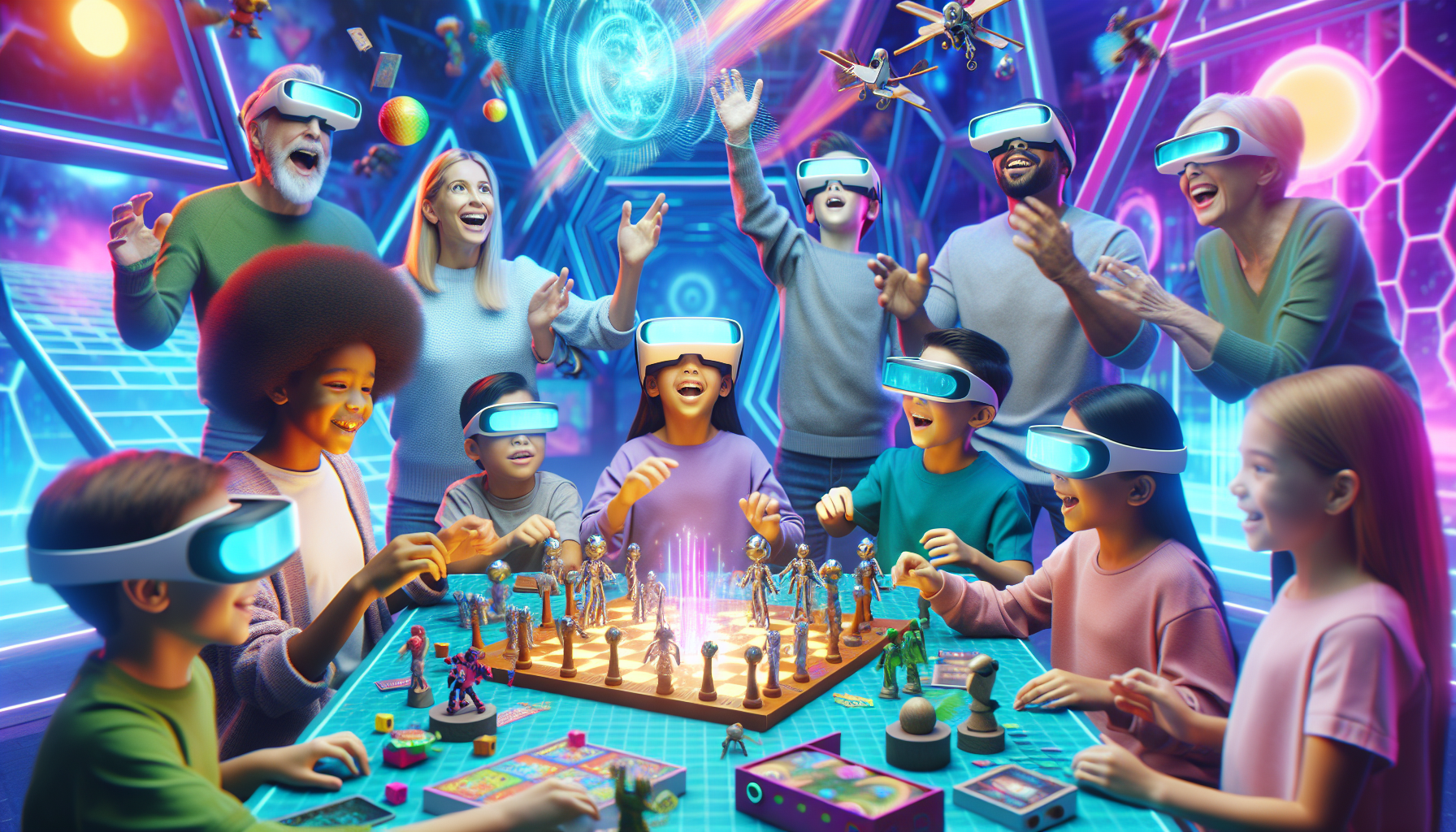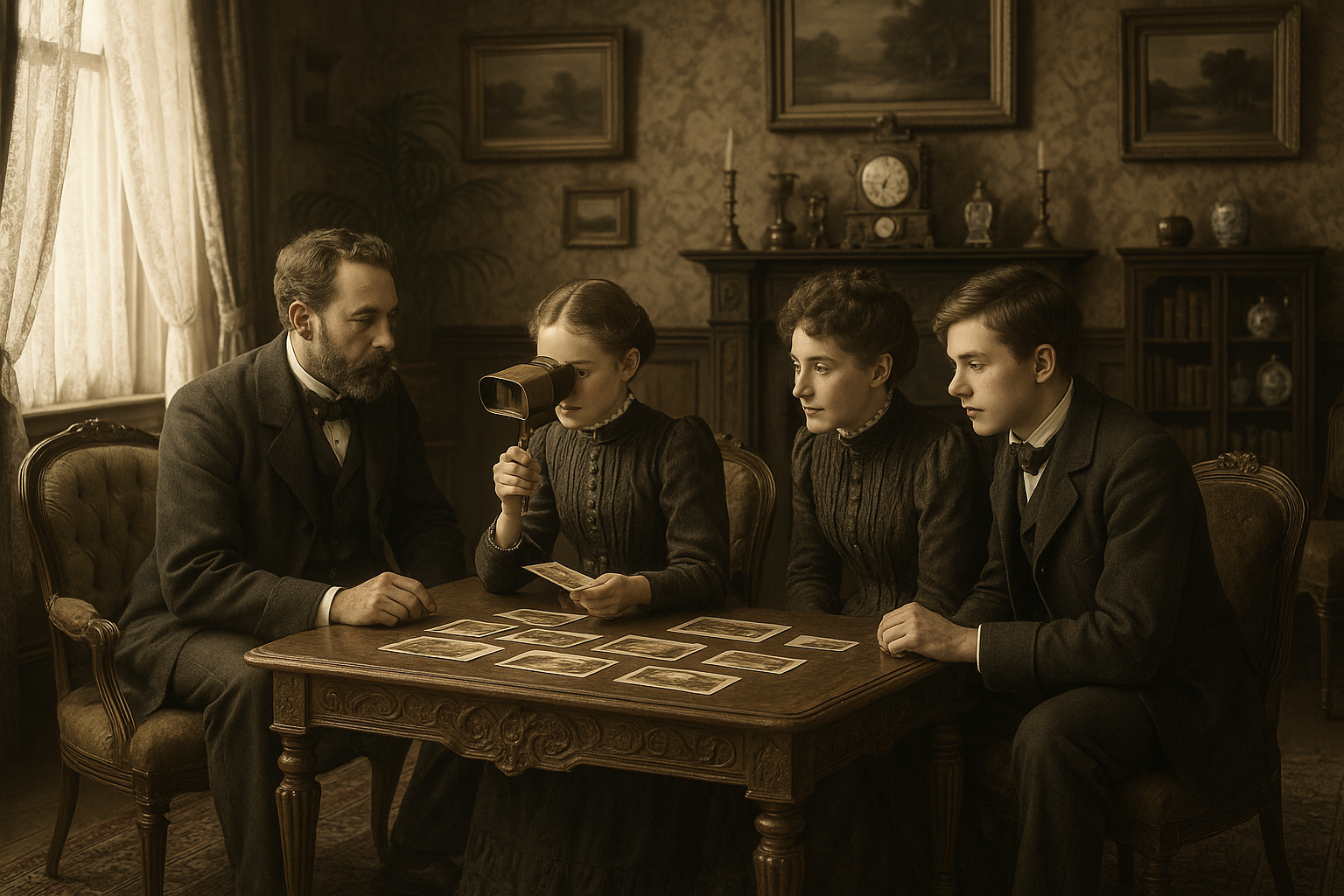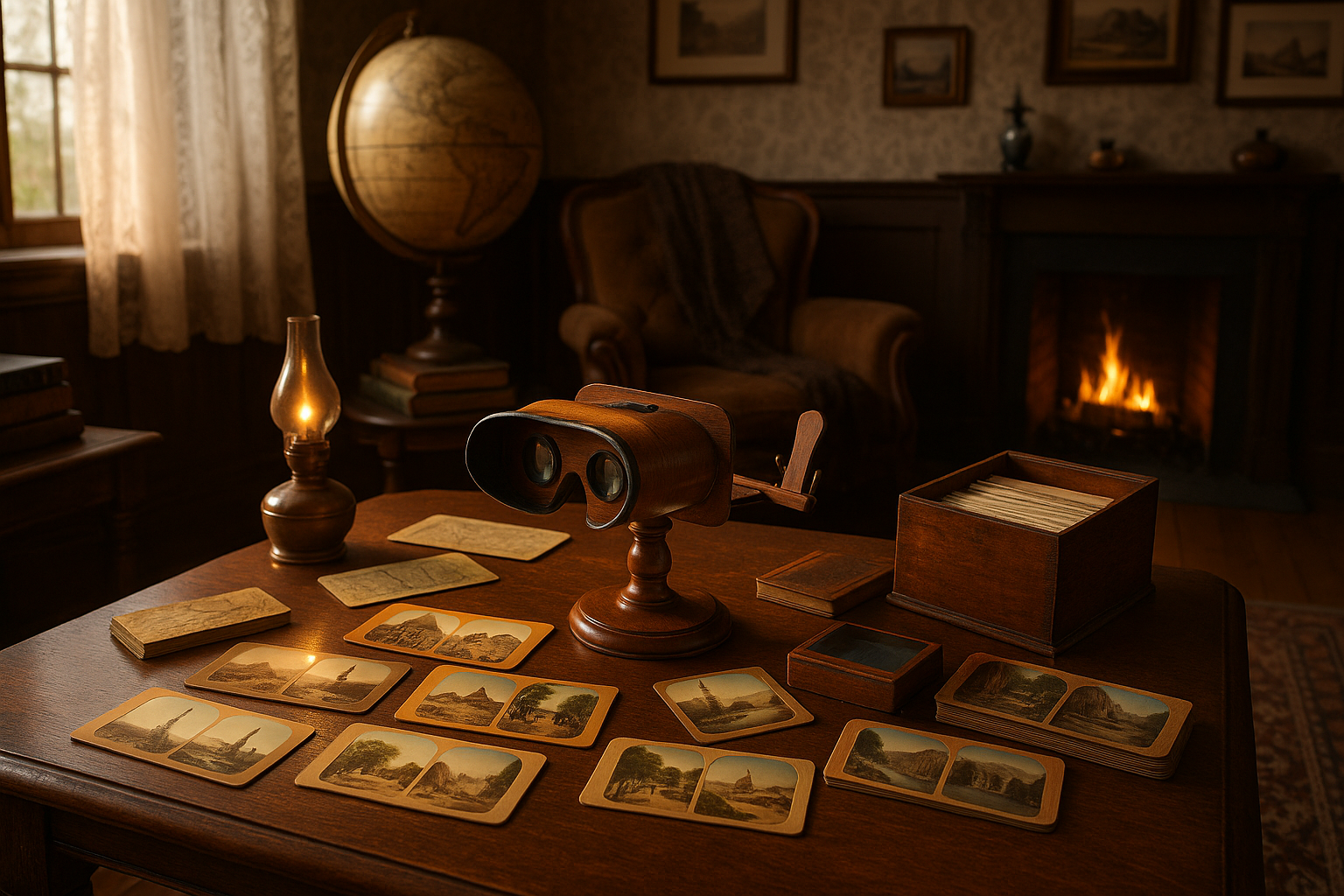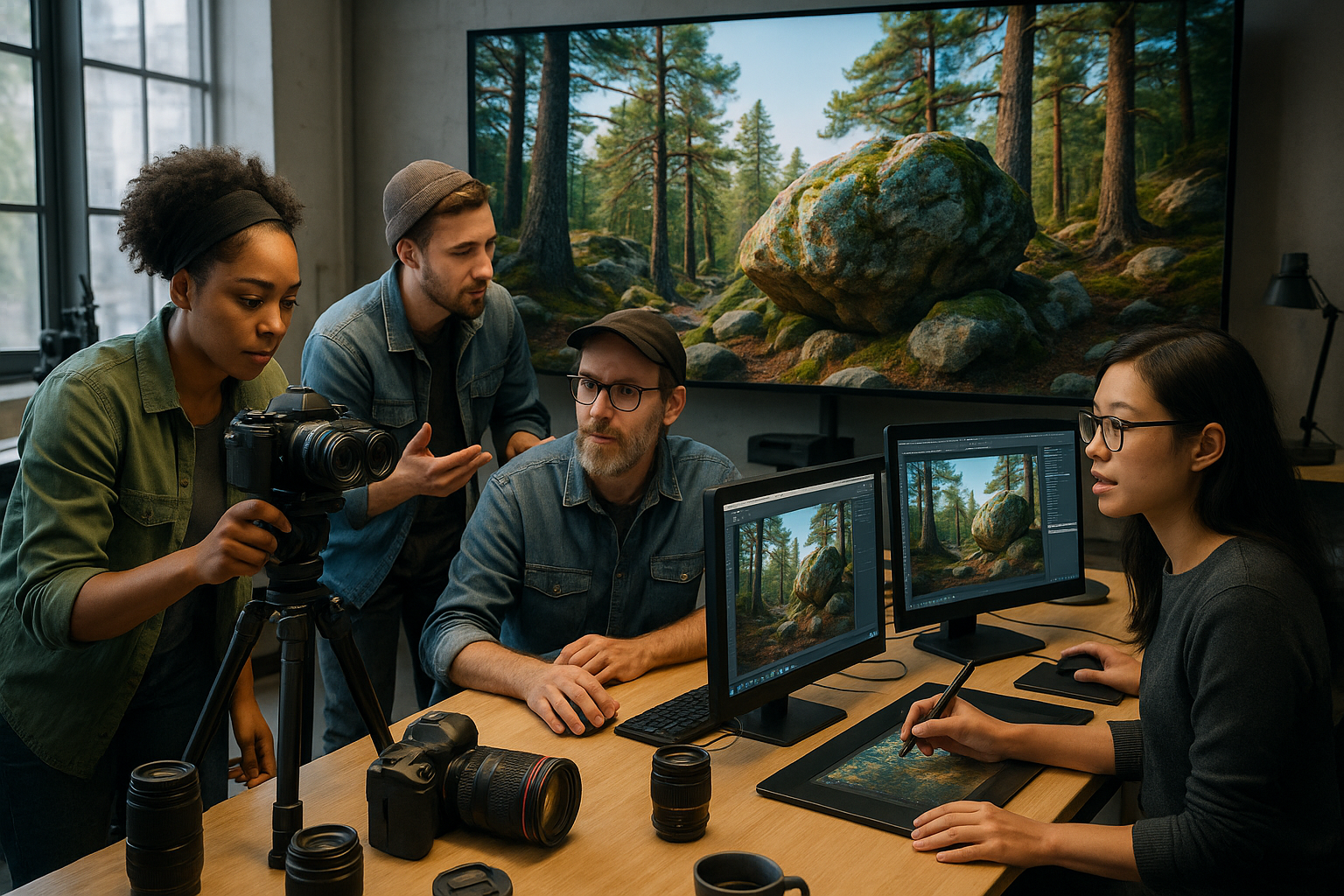In a world where technology continually reshapes the way we experience entertainment, toys have not been left behind. Imagine a universe where your favorite childhood playthings transcend their physical form and leap into a realm of immersive adventure. Welcome to the dazzling domain of stereoscopic toy adaptations! This is not just another chapter in the evolution of toys; it is a vibrant symphony of sight and sensation that transforms playtime into an enthralling journey through the third dimension. 🎮✨
At its core, stereoscopic technology is about creating an illusion of depth, making objects appear more lifelike and tangible. It’s the magic behind 3D movies, virtual reality, and now, an exciting frontier in the toy industry. But how did we get here? The journey from the simple, tactile toys of yesteryear to today’s high-tech marvels is a testament to human ingenuity and a relentless pursuit of fun. As we delve into this guide, we’ll explore the fascinating history of stereoscopic technology and its adaptation into toys, unveiling how these innovations have redefined play for generations to come.
For parents and tech enthusiasts alike, the integration of stereoscopic features into toys opens up a myriad of opportunities. It’s not just about enhancing play; it’s about engaging young minds in ways that were once the realm of science fiction. From educational toys that teach through immersive experiences to action figures that bring cinematic excitement to your living room, the potential applications are boundless. We’ll explore how these adaptations not only entertain but also educate, fostering creativity and critical thinking in ways traditional toys could never achieve.
Furthermore, the market for stereoscopic toy adaptations is as diverse as it is dynamic. With a plethora of options available, from affordable entry-level gadgets to high-end devices that offer state-of-the-art experiences, choosing the right toy can be both exciting and daunting. Our guide will provide you with a comprehensive overview of the top products available, helping you navigate this vibrant landscape with ease. Whether you’re a collector seeking the latest trend or a parent looking to enrich your child’s playtime, there’s something here for everyone.
As we embark on this exploration of stereoscopic toy adaptations, prepare to be amazed by the innovations that await. This is more than just a guide—it’s an invitation to rediscover the joy of play in a whole new dimension. So, sit back, strap on your metaphorical 3D glasses, and get ready to dive into a world where imagination knows no bounds. Whether you’re young or young at heart, this adventure promises to be a thrilling ride through the wondrous possibilities that await in the realm of stereoscopic toys! 🚀🎉
The Evolution of Stereoscopic Toy Adaptations
Stereoscopic technology has been a fascinating realm that has continuously evolved over the years. From its initial conception in the early 19th century to its application in modern entertainment, stereoscopy has undergone significant transformations. Today, its application in toys has brought about a new dimension of play, captivating both children and adults alike. The immersive nature of stereoscopic toys offers an enhanced sensory experience, blending the lines between reality and imagination.
Initially, stereoscopy was a simple optical illusion created by viewing two slightly different images side-by-side. This early technology laid the groundwork for the development of various devices such as the View-Master, which became a household name in the mid-20th century. These early toys utilized photographic reels to create a 3D effect, providing a window into different worlds, whether it was exploring the depths of the ocean or traversing the surface of the moon. The allure of these early stereoscopic toys was in their ability to transport the viewer to another place, igniting a sense of wonder and adventure.
As technology progressed, so did the sophistication of stereoscopic toys. The advent of digital technology in the late 20th century allowed for more dynamic and interactive experiences. Today’s stereoscopic toys often incorporate augmented reality (AR) and virtual reality (VR) elements, offering an even more immersive experience. For instance, toys like VR headsets and AR-enhanced puzzles and games enable users to interact with a virtual world in real-time, blurring the boundaries between physical and digital play. This evolution not only enhances play value but also introduces educational elements, making learning fun and engaging.
Types of Stereoscopic Toys: A Comparative Analysis
The world of stereoscopic toys is diverse, encompassing various types that cater to different interests and age groups. Understanding the different categories can help consumers make informed choices about which toys might be best suited for their needs. Let’s explore some of the prominent types of stereoscopic toys available in the market today.
One of the most popular categories is VR headsets. These devices are designed to fully immerse the user in a virtual environment, providing an unparalleled sensory experience. They often come with hand controllers that allow users to interact with the virtual world, making the experience more interactive and engaging. Some popular VR headsets include the Oculus Quest and PlayStation VR, which are known for their high-quality graphics and extensive game libraries.
Another category is AR-enhanced toys, which blend digital elements with the physical world. These toys typically use a smartphone or tablet to overlay digital content onto the real world, offering an interactive experience. Examples include AR-enhanced board games and puzzles that animate when viewed through a device, adding a new layer of interactivity to traditional play.
In contrast, traditional stereoscopic viewers like the View-Master continue to be popular, especially among collectors and those seeking a nostalgic experience. These devices have evolved to include digital versions that utilize smartphone apps to display 3D images and videos, keeping the classic design while incorporating modern technology.
| Type of Stereoscopic Toy | Features | Popular Models |
|---|---|---|
| VR Headsets | Immersive virtual environments, interactive controllers | Oculus Quest, PlayStation VR |
| AR-Enhanced Toys | Augmented reality features, requires smartphone/tablet | AR Board Games, AR Puzzles |
| Stereoscopic Viewers | Classic design, digital and analog versions | View-Master, Smartphone Viewers |
For a more in-depth understanding, check out this informative YouTube video that explores the latest trends in stereoscopic toys.
Benefits of Stereoscopic Toys in Child Development
While stereoscopic toys are undoubtedly fun and engaging, they also offer several developmental benefits, particularly for children. These toys can play a significant role in enhancing cognitive and motor skills, fostering creativity, and promoting learning through play. Let’s delve into how stereoscopic toys can contribute to a child’s development.
Firstly, stereoscopic toys can improve spatial awareness and hand-eye coordination. Interactive toys that require physical manipulation, such as VR controllers or AR-enhanced games, encourage children to coordinate their movements with visual feedback. This coordination helps develop fine motor skills and spatial reasoning, which are crucial in everyday activities and academic subjects like math and science.
Moreover, these toys stimulate creativity and imagination. By providing an immersive environment, stereoscopic toys allow children to explore and interact with virtual worlds, encouraging imaginative play. This type of play can enhance problem-solving skills and promote out-of-the-box thinking, as children navigate challenges and create stories within the virtual realm.
In addition to cognitive and motor benefits, stereoscopic toys can also facilitate learning. Many educational toys use AR and VR to bring subjects like history, science, and geography to life. By making abstract concepts tangible and interactive, these toys can enhance understanding and retention, making learning more engaging and effective.
- Enhances spatial awareness and hand-eye coordination
- Stimulates creativity and imagination
- Facilitates learning through interactive play
Encourage your child’s development by incorporating stereoscopic toys into their playtime. Not only will they have fun, but they’ll also be learning valuable skills that will benefit them throughout their lives. 🎮
Choosing the Right Stereoscopic Toy for Your Needs
With the plethora of stereoscopic toys available on the market, choosing the right one can seem daunting. However, by considering a few key factors, you can make an informed decision that suits your needs and preferences. Let’s explore some essential considerations when selecting a stereoscopic toy.
Firstly, consider the age appropriateness of the toy. Stereoscopic toys often come with age recommendations, as some may be more suitable for older children due to their complexity or content. Ensure that the toy you choose is appropriate for the age and developmental stage of the child to ensure safety and maximize enjoyment.
Another important factor is the intended use of the toy. Are you looking for an educational tool, a source of entertainment, or a combination of both? Many stereoscopic toys offer educational content, making them ideal for parents who want to encourage learning through play. Conversely, if entertainment is the primary goal, toys with a wide range of interactive games and experiences may be more suitable.
Lastly, consider the compatibility and ease of use. Some stereoscopic toys require additional devices such as smartphones, tablets, or gaming consoles. Ensure that you have the necessary equipment and that the toy is compatible with your existing technology. Additionally, consider the ease of setup and use, as a toy that is too complicated to operate may not be enjoyable for the child.
By keeping these factors in mind, you can select a stereoscopic toy that will provide hours of enjoyment and developmental benefits. Remember, the right toy can make all the difference in your child’s play experience! 😊

Conclusion
Conclusion: Immerse Yourself in Fun: The Ultimate Guide to Stereoscopic Toy Adaptations for a Whole New Dimension of Play!
In wrapping up our deep dive into the fascinating world of stereoscopic toy adaptations, we have explored the magical intersection where traditional play meets cutting-edge technology. This journey took us through the evolution of toys, from their humble beginnings to the innovative creations that incorporate stereoscopic technology, offering children and adults alike an immersive experience unlike any other. 🎮
We began by tracing the history of stereoscopic technology, noting its origins and how it has gradually infiltrated the toy industry. These adaptations have revolutionized the way we perceive play, transforming static objects into dynamic experiences that stimulate the senses and expand the imagination. We delved into specific examples, such as virtual reality (VR) headsets tailored for young audiences, augmented reality (AR) games that bring characters to life in our living rooms, and 3D puzzles that challenge our spatial awareness. Each of these toys not only provides entertainment but also enhances cognitive skills and creativity.
The discussion highlighted how stereoscopic toys are bridging the gap between physical and digital realms, allowing users to engage in multidimensional play. This hybrid approach encourages collaboration and social interaction, as players navigate through these augmented environments together. It also underscores the educational potential of such toys, offering new ways to learn through interactive and engaging methods. For instance, apps that overlay educational content onto real-world objects can turn a simple geography lesson into an exciting adventure around the globe.
Moreover, we examined the role of parents and educators in guiding children through this new dimension of play. By selecting appropriate toys and setting boundaries, adults can ensure that children reap the benefits of stereoscopic play while maintaining a healthy balance with traditional forms of play and screen time. We also touched upon the importance of inclusivity in toy design, advocating for adaptations that cater to children with different needs and abilities, thus promoting an equitable play environment for all.
As we move forward, the integration of stereoscopic technology into toys will likely become more sophisticated, offering even richer experiences. This evolution opens up possibilities for new industries and collaborations, inviting toy manufacturers, tech developers, and educators to innovate together. As these technologies continue to evolve, it is crucial to remain mindful of privacy and safety concerns, ensuring that play remains a positive and secure experience for everyone involved.
The impact of stereoscopic toy adaptations extends beyond play. These toys have the potential to foster important life skills such as problem-solving, teamwork, and adaptability. They can also spark a lifelong interest in technology and science, inspiring the next generation of innovators.
In conclusion, the world of stereoscopic toys offers an exciting frontier for exploration and creativity. By embracing these innovations, we can provide children with tools to not only play but also learn and grow in dynamic new ways. We encourage you to share this guide with friends and family who might be interested in exploring this new dimension of play. Feel free to leave a comment below sharing your experiences with stereoscopic toys or any thoughts you have on the future of play.
References:
– Toy Association’s Guide on Technology in Toys
– National Geographic’s Exploration on Augmented Reality in Education
– Journal of Educational Technology & Society
Toni Santos is a visual historian and artisan whose creative lens is captivated by the forgotten marvels of antique optical devices. Through his thoughtful storytelling, Toni revives the instruments that once transformed light into wonder—camera obscuras, magic lanterns, kaleidoscopes, and other ingenious tools that shaped our earliest visual imaginations.
His journey is rooted in a fascination with how humans have long sought to bend, reflect, and reveal the unseen. Whether tracing the mechanical poetry of 19th-century projectors or illustrating the tactile elegance of early lenses, Toni’s work invites us to see vision itself as an evolving art form.
Blending handcrafted design with historical inquiry, Toni brings to life the material soul of these devices—celebrating not just how they functioned, but what they meant. His creations and curated stories illuminate a world where science, illusion, and beauty were intricately linked through glass and brass.
As the curator of Vizovex, Toni shares detailed studies, reconstructed artifacts, and immersive content that help others rediscover the origins of visual technology and the magic of analog perception.
His work is a tribute to:
The craftsmanship behind early visual instruments
The wonder of seeing through the eyes of another century
The intersection of optics, art, and imagination
Whether you’re a collector, a designer, or someone drawn to the lost poetry of vision, Toni welcomes you into a world where light is a storyteller—one prism, one lens, one forgotten invention at a time.





